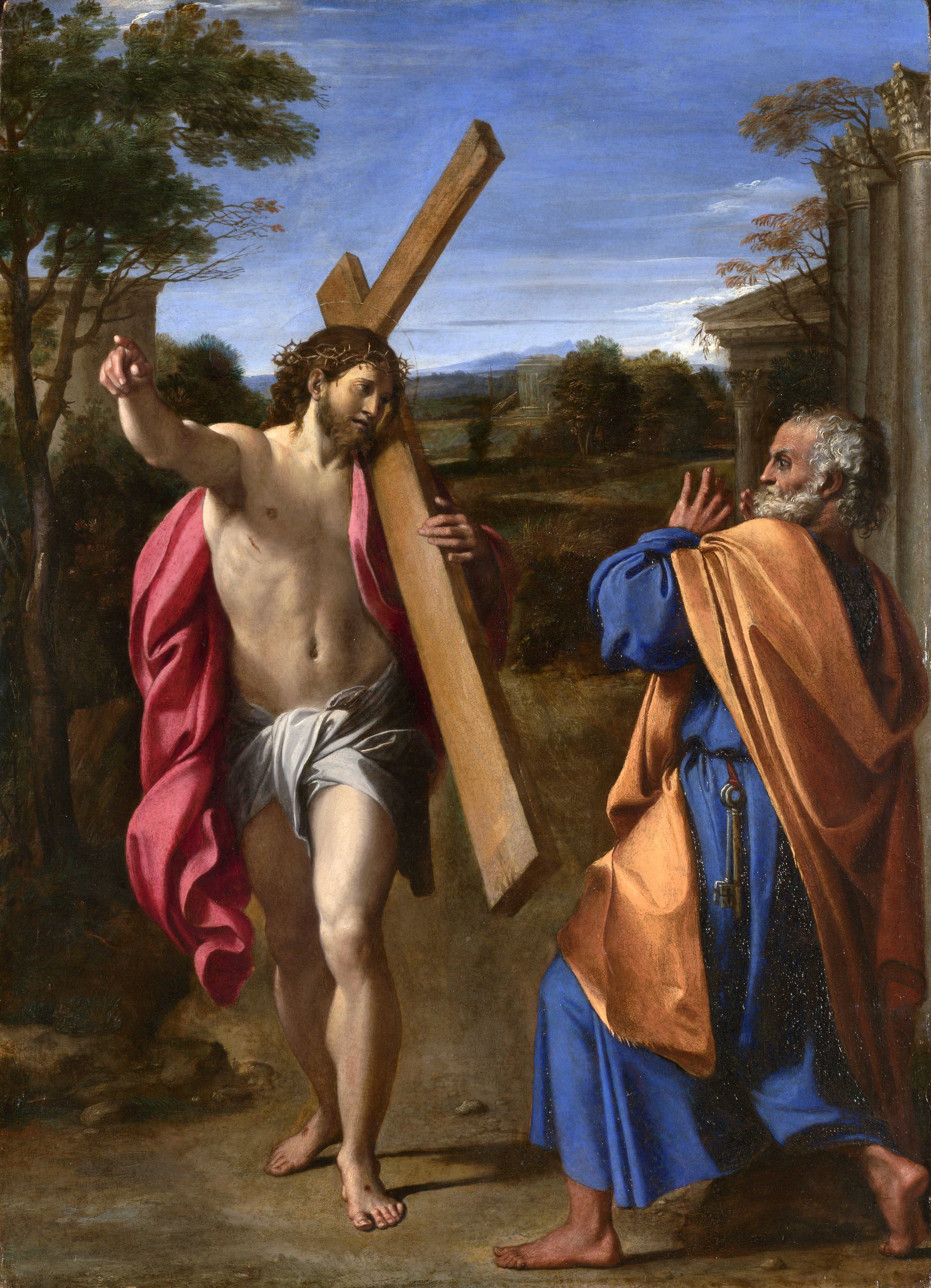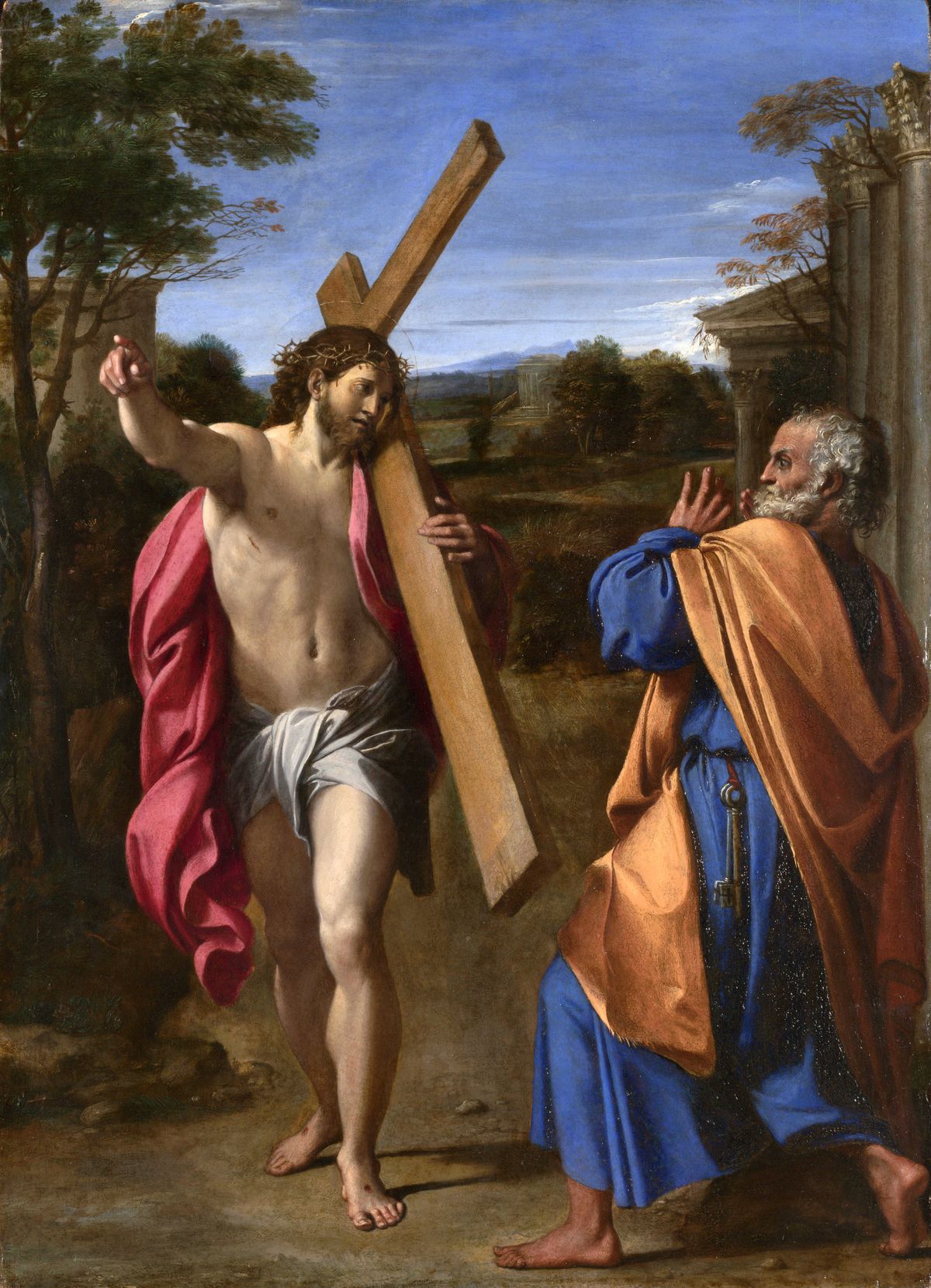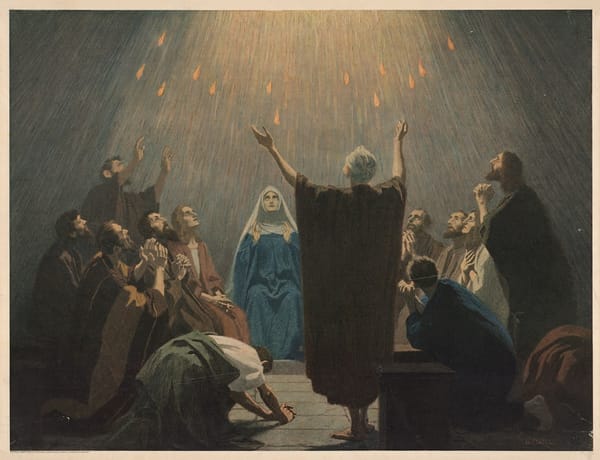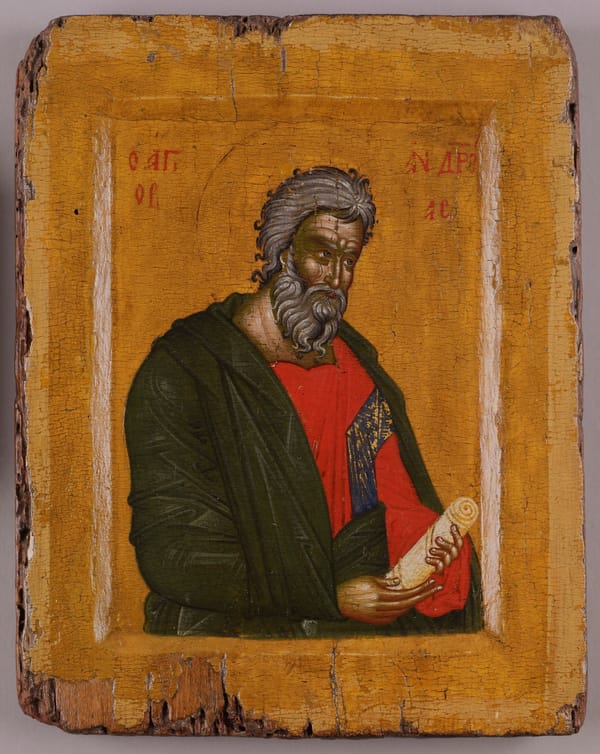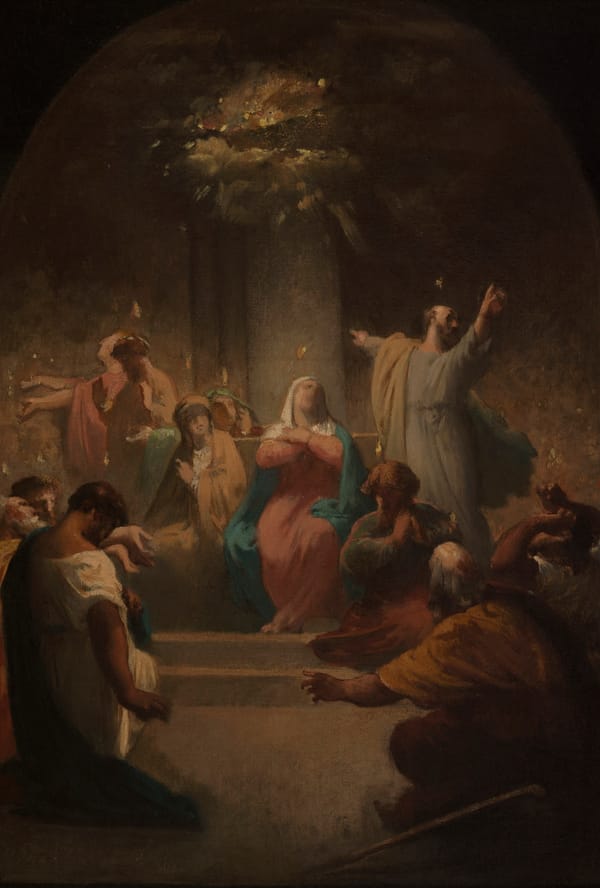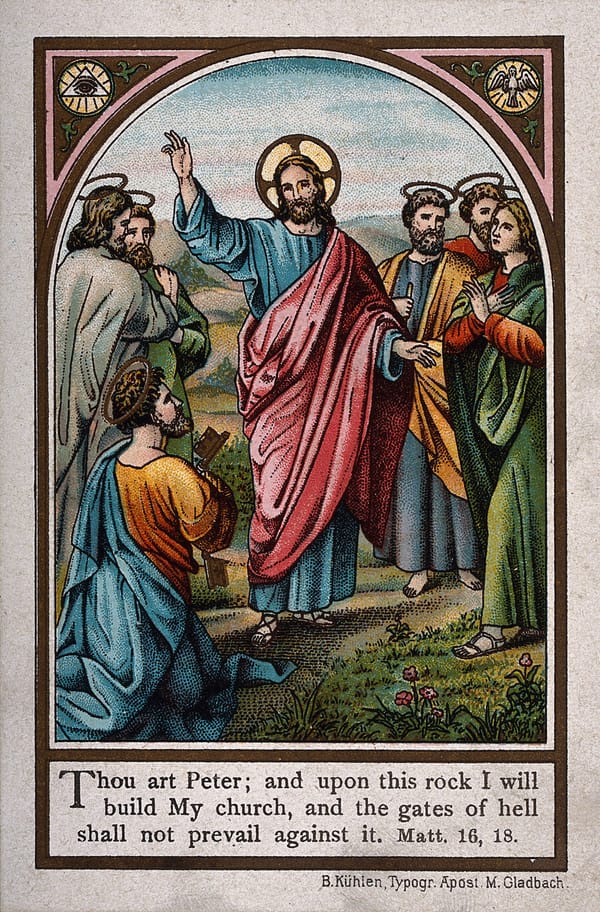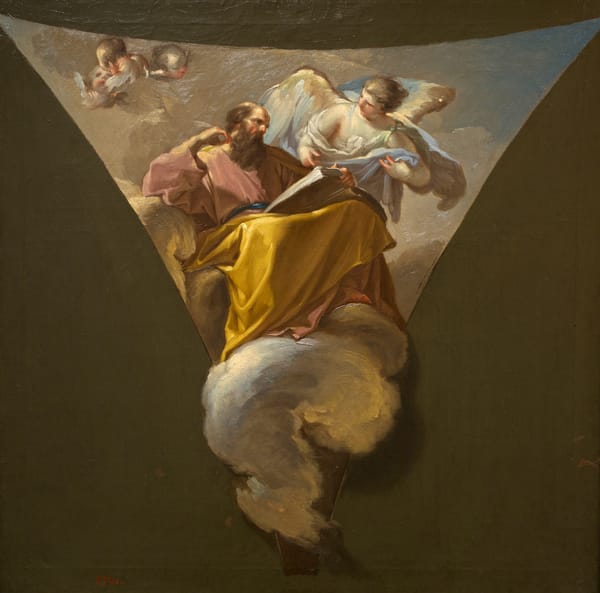Domine, quo vadis? is a c. 1602 painting by the Italian Baroque painter Annibale Carracci (1560–1609), depicting a scene from the apocrypha Acts of Peter. It is housed in the National Gallery, London, where it is given the title Christ appearing to Saint Peter on the Appian Way. The subject is a rare representation in art of the theme Quo vadis. Annibale Carracci was the founder of the Italian Baroque painting school, called Bolognese School. This painting is one of his best known works. Peter is depicted fleeing from Rome to avoid crucifixion and has a vision of meeting Christ bearing his Cross. Peter asks Jesus "Quo vadis?" to which he replies, "Romam vado iterum crucifigi". Peter returns to Rome after this vision.
The work depicts a scene featured in the apocryphal Acts of Peter. Saint Peter, while fleeing Rome along the ancient Via Appia, meets Christ outside the city, who is walking in the opposite direction towards the city, carrying his cross. Peter asks him, Domine, quo vadis? The question is in Latin and means "Lord, where are you going?" Jesus replies, Eo Romam iterum crucifigi, which means: "I am going to Rome to be crucified again."
The scene as catalogued in the apocryphal Acts of St. Peter, describes Peter who is fleeing Rome at the time of Emperor Nero's persecution. This encounter is reminiscent of Peter's denial, when Peter chose to deny Jesus three times during his passion and crucifixion. Apostle Peter realizes that he is on his way to making the same mistake all over again now, abandoning Jesus and his church in a moment of danger. Peter turns around when he understands that this was a sign, and returns to Rome to face the martyrdom.
Free Downloads Below
Hi-Res
1200px
800px
